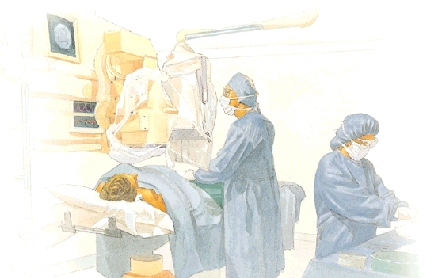Hunt-Hess Grades of Brain Aneurysms
Hunt-Hess Grades of Brain Aneurysms
Your loved one may be unable to make decisions about treatment. So you may need to decide what’s best for him or her. Your loved one’s neurosurgeon (a surgeon who is an expert on the brain) will talk with you. He or she may refer to the Hunt-Hess scale (see below). This scale helps the surgeon assess a person's condition. Test results and the grade of aneurysm can affect treatment options.
Hunt-Hess grades of brain aneurysms
Grade |
How your loved one may feel |
I |
Alert, aware of surroundings, either no symptoms or mild headache or neck stiffness |
II |
Alert, aware of surroundings, moderate to severe headache, stiff neck, no neurologic defect except cranial nerve palsy |
III |
Sluggish or confused, has weakness or partial or severe paralysis on one side of the body |
IV |
Dazed, has total paralysis on one side of the body |
V |
Comatose, with abnormal posture |
Adapted from Hunt WE, Hess RM. Surgical risk as related to time of intervention in the repair of intracranial aneurysm. J Neurosurg 1968; 28 (1):14–20.
The grade is advanced 1 level if you have a serious systemic disease (high blood pressure, diabetes, severe hardening of the arteries, chronic lung disease) or vasospasm.
Your neurosurgeon may use another aneurysm and neurological grading system such as the Glascow Coma Scale or the World Federation of Neurological Surgeons grading scale.
Updated:
March 03, 2018
Reviewed By:
Hanrahan, John, MD,Jasmin, Luc, MD
